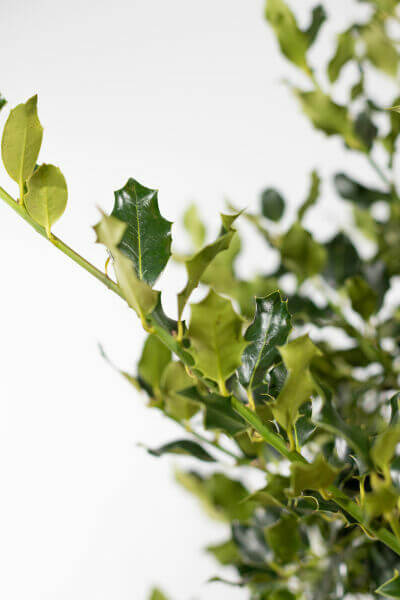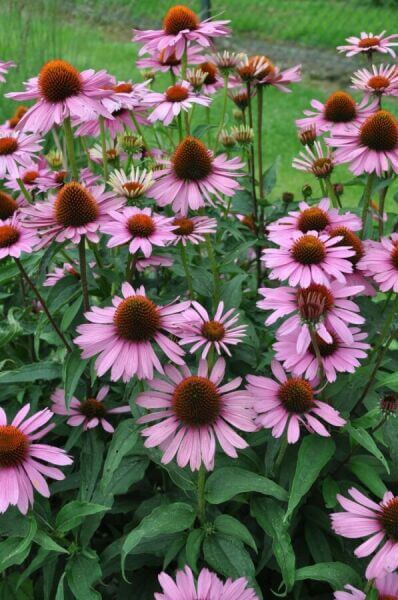Hedge Plants For Security And Privacy
Hedge Plants For Security And Privacy
Blog Article
Hedge Plants For Low Maintenance Gardens
Enhance your garden's appeal with rich hedge varieties such as Yew (Taxus), Thuja, Laurel, Photinia, and Bamboo, celebrated for their structural stability and environmental advantages.
Yew and Thuja provide evergreen coverage and winter season resilience, while Laurel provides quick growth and broad, aromatic leaves.
Photinia adds seasonal appeal with its lively red foliage, and Bamboo lends a low-maintenance, peaceful atmosphere.
These hedges improve air quality, reduce sound, and develop tranquil, private spaces.
Proper planting, spacing, and upkeep make sure vigorous growth and environmental consistency.
Explore how these lush varieties can raise your garden's appeal and wellness.
Key Takeaways
Transform Your Garden With Lush Hedge Ranges
- Select Yew for its thick, evergreen development and unparalleled longevity.
- Select Laurel for its quick development and broad leaves, ensuring quick privacy.
- Pick Photinia for its vibrant seasonal foliage, which turns a striking dark red.
- Utilize Bamboo for a low-maintenance, winter-hardy hedge with aesthetic appeal.
- Space plants 2-3 per meter and prune regularly for ideal growth and health.
Popular Hedge Plants
When changing a garden with rich hedge ranges, it's vital to think about popular hedge plants such as Yew, Thuja, Laurel, and Photinia due to their special qualities and advantages.
Yew (Taxus) is extremely respected for its durability and dense, green growth, making it a prime choice for enduring landscapes.
Thuja is noted for its evergreen foliage and robust winter durability.
Photinia adds seasonal vibrancy with red leaves that darken in time, producing dynamic visual appeal.
Laurel offers fast development and aromatic, broad leaves, suitable for quick privacy.
Furthermore, Bamboo is an excellent choice for atmosphere, using a low-maintenance, winter-hardy alternative that improves the garden's aesthetic with its sophisticated, swaying walking sticks.
These selections cater to a variety of horticultural requirements and preferences.
Advantages of Garden Hedges
Garden hedges provide a wide variety of benefits, making them a valuable addition to any landscape. These natural barriers are cost-efficient to execute and provide substantial wind defense, improving air circulation and adding to noise decrease. The dense foliage of hedges like Thuja and Beech makes sure privacy by blocking exposure, creating a remote and serene environment.
Hedges likewise play an essential function in microclimate regulation, supplying a stable environment that promotes plant growth and reduces temperature level changes. Their detailed leaf structures filter contaminants, enhancing air quality and contributing to a healthier garden environment.
Moreover, hedges stand out in sound reduction, taking in and deflecting acoustic waves to lower ambient sound levels. This dual functionality of offering both visual and acoustic privacy improves the total tranquility and aesthetic appeal of any garden.
Planting and Maintenance Tips
For an effective hedge, careful preparation of the planting location is crucial. Ensure the soil has appropriate pH and drain to support strong root advancement.
Area the plants properly for the picked species. Water the hedge often throughout its preliminary development stage, changing as required with seasonal modifications.
Carry out a systematic pest control and illness avoidance strategy, using organic or chemical treatments when required. Routinely examine for aphids, mites, and fungal infections.
Apply mulch to retain moisture and reduce weeds. Seasonal pruning promotes thick development and air blood circulation, necessary for plant health.
Following these standards will help you cultivate a dynamic, well-kept hedge that enhances the beauty of your garden.
Spacing and Cutting Standards
Spacing and Trimming Guidelines
Correct spacing and cutting are crucial for cultivating healthy, aesthetically appealing hedges. Sufficient spacing makes sure each plant receives adequate nutrients, light, and airflow.
Follow these standards for optimum hedge upkeep:
- Spacing: Position hedge plants 2-3 plants per meter to encourage robust growth.
- Pruning Methods: Routine pruning is essential for preserving wanted hedge height and shape. Trim brand-new growth in summer season and cut back older wood during winter season.
- Seasonal Care: Adjust trimming approaches and schedules according to seasonal requirements to ensure plant health.
- Hedge Height: Frequently display and cut to maintain the desired hedge height and achieve uniform aesthetic appeals.
Sticking to these steps will ensure your hedge prospers, boosting both the appeal and functionality of your garden.
Picking the Right Hedge
Picking the Right Hedge
Picking the proper hedge involves assessing elements such as mature height, foliage density, and ecological strength. Successful hedge plant choice needs comprehending each types' development qualities and site-specific versatility.
For example, Yew (Taxus) offers excellent durability and thick growth, while Thuja is notable for its winter durability. In addition, thinking about upkeep requirements is essential; fast-growing types like Laurel or Privet demand routine trimming, whereas low-maintenance alternatives like Bamboo or Ivy might be preferable for those looking for minimal maintenance.
Ecological factors such as soil type, light availability, and wetness conditions must also assist the choice process. This mindful method ensures the picked hedges will prosper, supplying both practical and aesthetic advantages to the garden landscape.
Shipment and Planting Recommendations
To guarantee your hedge plants thrive, they must be provided by specialized couriers and planted immediately upon arrival.
Follow these essential steps for effective planting:
- Soil Preparation: Improve the soil with raw material to improve drainage and nutrient material.
- Planting Depth: Develop a trench twice the width and equal to the depth of the root ball.
- Watering Methods: Water completely after planting, keeping the soil regularly moist but not filled.
- Mulching: Use a layer of mulch to maintain moisture and suppress weeds.
Customer Support and Service
Provided the important function of prompt help in horticultural pursuits, our customer support team is offered six days a week through telephone, email, and social networks to use skilled advice and swiftly deal with any concerns. Their commitment to fast action times ensures customer complete satisfaction by fixing inquiries connected to plant health, ideal planting techniques, and upkeep schedules.

Interaction Method
This detailed support group, enhanced by a stellar 9.3/ 10 customer score, highlights our commitment to improving the gardening experience for every single customer.
Regularly Asked Concerns
The Length Of Time Does It Consider Hedge Plants to Develop?
Hedge plants usually need one to 3 years to end up being totally developed, with the specific period differing by species and growing conditions.
Efficient care during this crucial period is important for robust growth. Consistent watering, vigilant weed control, and proper fertilizer application are essential in promoting strong root development.
For instance, fast-growing species like Laurel might develop more quickly, while slower-growing ranges such as Yew may take longer. Persistent maintenance accelerates the establishment procedure, leading to thick and healthy hedges.
What Are the Finest Hedge Plants for Privacy?
The question of the finest hedge plants for personal privacy includes assessing evergreen and deciduous choices.
Evergreen hedges like Thuja, Laurel, and Cypress provide year-round protection, making sure constant personal privacy.
On the other hand, deciduous hedges such as Beech provide seasonal privacy, shedding leaves in cooler months.
Secret maintenance suggestions for privacy hedges consist of regular trimming, fertilizing in spring, and proper spacing-- generally 2 to 3 plants per meter.
Additionally, constant watering and persistent weed removal are crucial for promoting healthy, thick growth.
Can Hedge Plants Bring In Wildlife to My Garden?
Yes, hedge plants can draw in wildlife to your garden by supplying vital benefits like shelter, food, and nesting websites, therefore improving regional biodiversity. For example, yew, holly, and laurel are excellent for bring in birds, while ivy supports a range of insects.
However, it is very important to note that there are some disadvantages, such as increased upkeep to manage insects and routine upkeep. Thoroughly choosing and keeping hedge varieties can help stabilize these drawbacks and benefits, eventually fostering a sustainable and lively ecosystem in your garden.
Are There Any Blooming Hedge Plants Available?
Yes, there are flowering hedge plants available that can improve the appeal of your garden.
For instance, Elaeagnus, also referred to as Olive Willow, produces aromatic white flowers in the fall, including a touch of elegance.
Photinia, another popular choice, showcases dynamic red leaves that grow into an abundant green, creating a dynamic visual effect throughout the seasons.
To guarantee these plants grow, it's important to practice proper pruning techniques and seasonal maintenance, such as trimming brand-new development in the summertime and cutting down in the winter.
These measures will help preserve the health and visual appeal of your blooming hedges.
How Do I Avoid Bugs in My Hedge Plants?
To avoid bugs in hedge plants, use natural bug control approaches and keep correct hedge care. Present beneficial insects like ladybugs, which take advantage of hazardous insects, to produce a balanced ecosystem.
Regularly inspect your hedges for signs of problem and promptly get rid of any afflicted parts to avoid the spread. Guarantee the health of your hedges by applying balanced fertilizers and supplying appropriate water.
Use mulching to keep soil moisture and proper spacing to lower plant tension and promote robust growth. These practices collectively assist in decreasing bug problems and maintaining a healthy hedge.
Conclusion
In essence, choosing the ideal hedge ranges such as Yew, Thuja, and Laurel can transform any garden into a tranquil sanctuary. These plants offer year-round plant, boost aesthetic appeal, and offer useful benefits like sound reduction and wind defense.
Appropriate planting strategies, accurate spacing, constant watering, and seasonal trimming are essential for optimal development.
Trustworthy delivery services and skilled customer assistance make sure a seamless experience from purchase to planting, making it easier than ever to raise your outdoor space.
Garden hedges use a wide range of advantages, making them an Additional hints important addition to any landscape. These natural barriers are affordable to execute and supply significant wind security, improving air blood circulation and contributing to noise reduction. The thick foliage of hedges like Thuja and Beech makes sure privacy by obstructing exposure, developing a secluded and serene environment.

Pruning Techniques: Regular pruning is vital for preserving preferred hedge height and shape. Trim new growth in summer and cut back older wood during winter season.
Report this page